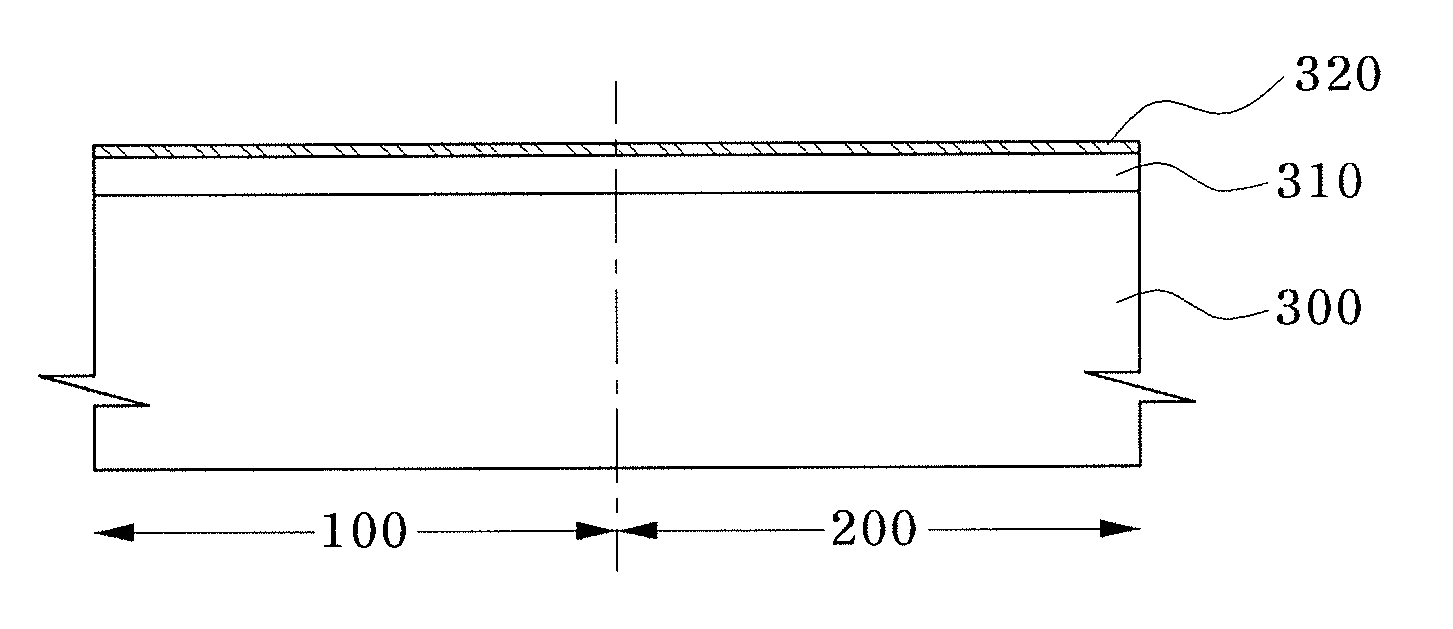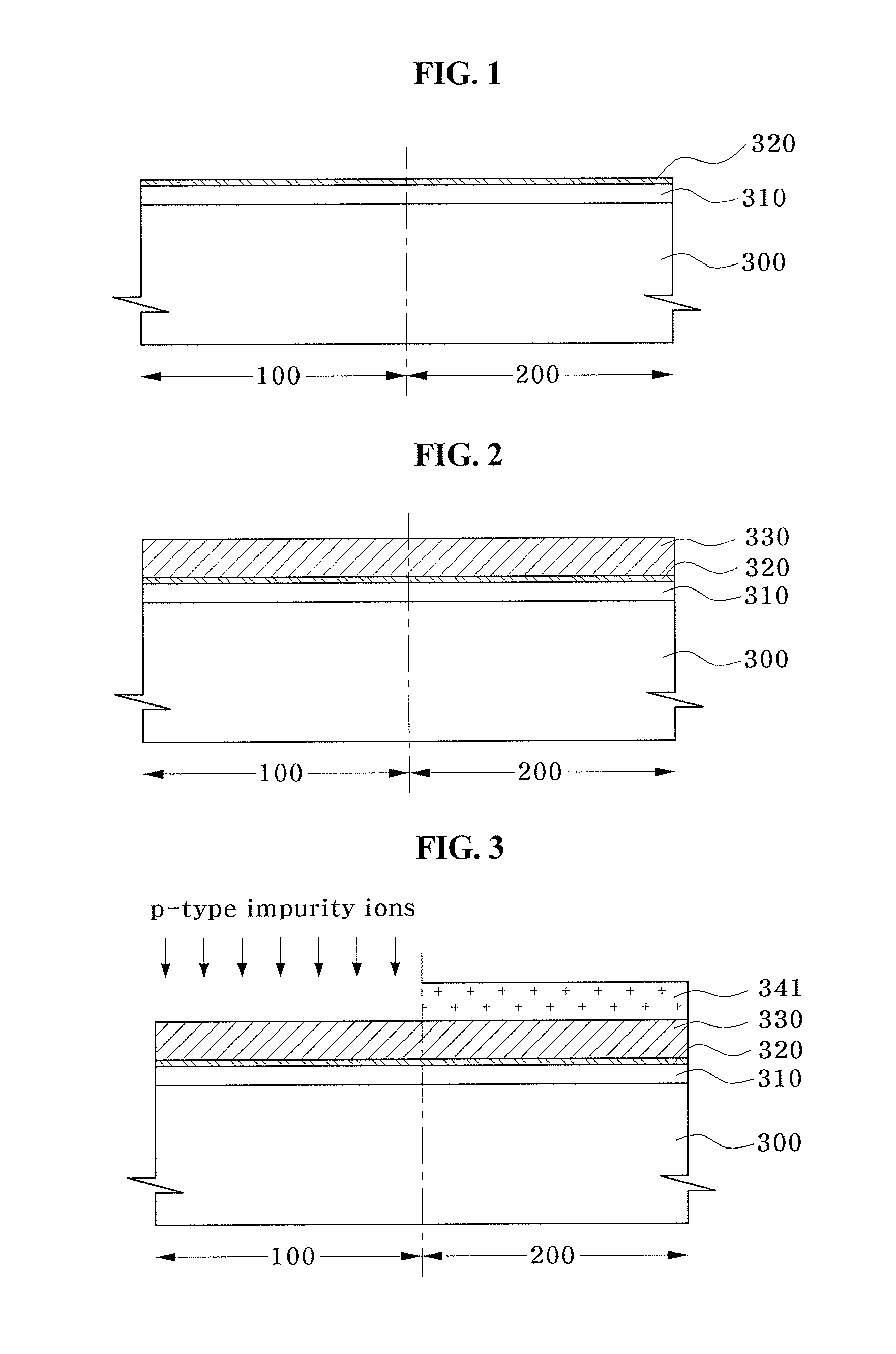Methods of forming dual gate of semiconductor device
a dual gate, semiconductor technology, applied in semiconductor/solid-state device manufacturing, basic electric elements, electric apparatus, etc., can solve the problems of gate short circuit and bridging, photoresist residues are not readily removed, and photoresist residues are left behind
- Summary
- Abstract
- Description
- Claims
- Application Information
AI Technical Summary
Benefits of technology
Problems solved by technology
Method used
Image
Examples
Embodiment Construction
[0022]FIGS. 1 to 9 are cross-sectional views illustrating a method for forming a dual gate of a semiconductor device according to an embodiment of the present invention, FIG. 10 is a diagram showing the structure of a spin-type single cleaner used to remove photoresist residues in methods for forming a dual gate of a semiconductor device according to the present invention, and FIG. 16 shows graphs illustrating a procedure for the removal of a native oxide layer in a method for forming a dual gate of a semiconductor device according to an embodiment of the present invention.
[0023]With reference to FIG. 1, a gate insulating layer 310 is formed on a semiconductor substrate 300 having a first region 100 and a second region 200. The first region 100 is a region where a PMOS transistor is formed, and the second region 200 is a region where an NMOS transistor is formed. The semiconductor substrate 300 is a silicon substrate, but is not limited thereto. For example, the semiconductor substr...
PUM
 Login to View More
Login to View More Abstract
Description
Claims
Application Information
 Login to View More
Login to View More - R&D
- Intellectual Property
- Life Sciences
- Materials
- Tech Scout
- Unparalleled Data Quality
- Higher Quality Content
- 60% Fewer Hallucinations
Browse by: Latest US Patents, China's latest patents, Technical Efficacy Thesaurus, Application Domain, Technology Topic, Popular Technical Reports.
© 2025 PatSnap. All rights reserved.Legal|Privacy policy|Modern Slavery Act Transparency Statement|Sitemap|About US| Contact US: help@patsnap.com



